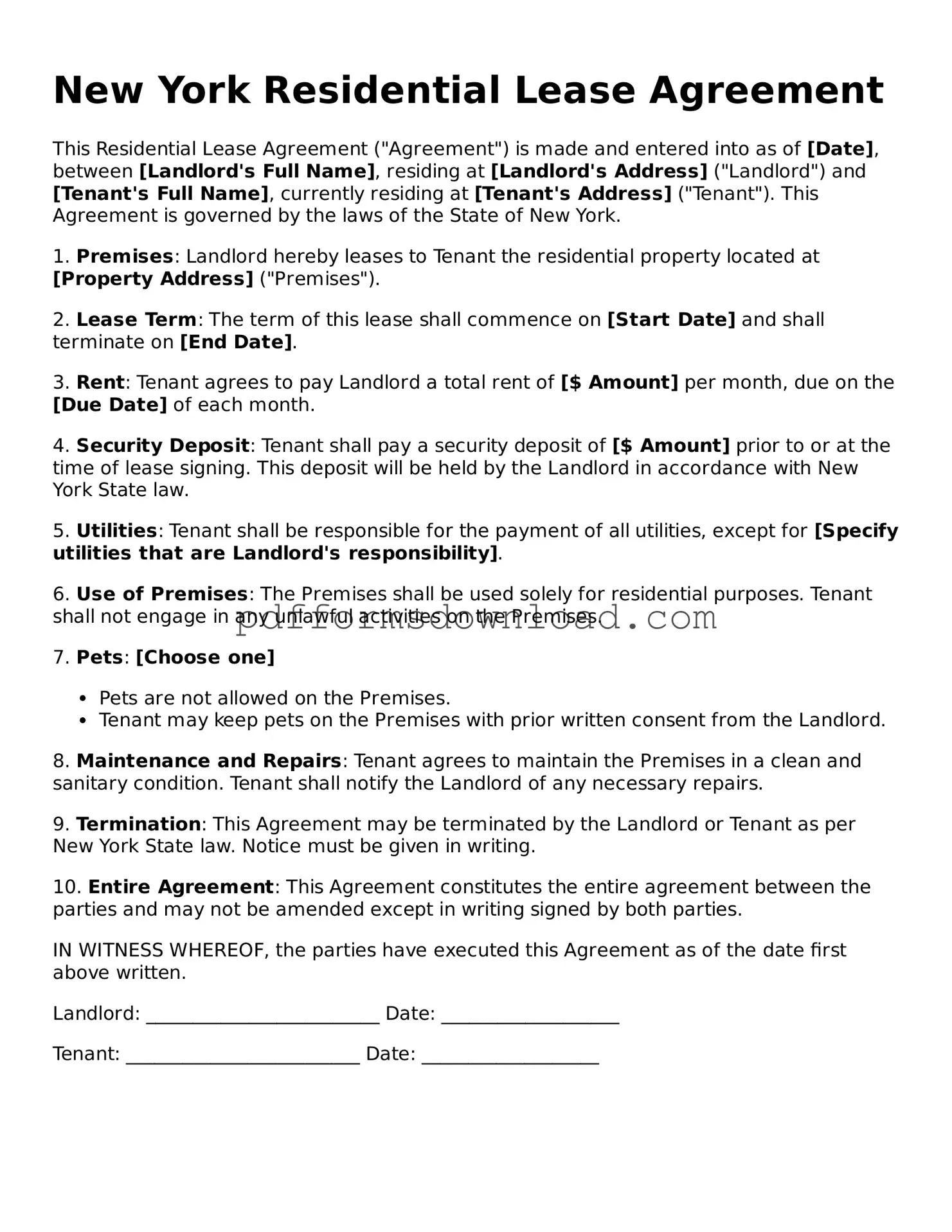What is a New York Residential Lease Agreement?
A New York Residential Lease Agreement is a legal document that outlines the terms and conditions between a landlord and a tenant for renting a residential property. This agreement details the responsibilities of both parties, including rent payment, maintenance, and rules for living in the property.
What should be included in the lease agreement?
The lease agreement should include the names of the landlord and tenant, the rental property's address, the lease term (length of the rental period), the amount of rent, payment due dates, security deposit details, and any rules or regulations regarding the property. It may also cover utilities, maintenance responsibilities, and procedures for terminating the lease.
How long is a typical lease agreement in New York?
Most residential leases in New York are typically for one year. However, leases can also be month-to-month or for shorter or longer durations, depending on what the landlord and tenant agree upon.
Can a landlord increase the rent during the lease term?
Generally, a landlord cannot increase the rent during the lease term unless the lease agreement specifically allows for it. Rent increases usually take effect at the beginning of a new lease term, and tenants must be given proper notice according to state laws.
What is a security deposit, and how much can a landlord charge?
A security deposit is a sum of money that a tenant pays to the landlord before moving in. This deposit protects the landlord against damages or unpaid rent. In New York, the security deposit cannot exceed one month's rent for most residential leases.
What happens if I need to break my lease early?
If you need to break your lease early, you may be responsible for paying rent until a new tenant is found or until the lease ends. Check your lease for specific terms regarding early termination. It’s often best to communicate with your landlord to discuss your options.
Are there any tenant rights I should know about?
Yes, tenants in New York have several rights, including the right to a habitable living environment, protection against discrimination, and the right to privacy. Landlords must provide proper notice before entering the property, and tenants cannot be evicted without a court order.
What should I do if I have a dispute with my landlord?
If you have a dispute with your landlord, try to resolve it through communication first. Document all interactions. If the issue persists, you may seek assistance from local housing authorities or legal aid organizations. Mediation or small claims court may also be options for resolving disputes.
Can I sublet my apartment?
Subletting your apartment may be possible, but it typically requires the landlord's approval. Check your lease for any specific clauses regarding subletting. If allowed, you may need to provide the landlord with information about the potential subtenant.
